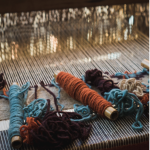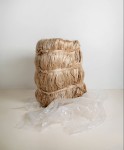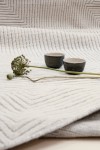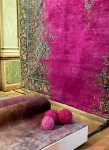To be or KNOT to be…

Knot Your Average Rug Tale
We will ‘knot’ bore you as we dive into the world of hand-knotted rugs, where tradition and artisanal mastery unite in a dance of creativity.
A secret dance unfolds when rug dealers examine their precious treasures. With a twinkle in their eyes and seasoned hands, they gently flip the rugs to reveal their hidden beauty—the intricate tapestry of knots and loops on the back.
In the enchanting lands of Iran, Central Asia, India, and Turkey, weavers meticulously create rugs using two main knotting techniques: the Senneh or Persian knot and the Ghiordes or Turkish knot. Each knot represents a unique cultural legacy, preserving the essence of time-honoured traditions. In the Senneh knot, the yarn lovingly embraces one of the two warp strands, creating asymmetrical beauty that adorns rugs with intricate detailing. The Tibetan knot also shares similarities with the Persian or Senneh knot. Both knots are double-looped and symmetrical. The difference lies in the looping direction. While the Persian knot is open to the right or left, the Tibetan knot’s loops are consistently open to the top or bottom.
Tie the Knot
The enigmatic Jufti knot. This technique is employed in the lands of Khorassan, wrapping the yarn around four warp strands at once. While it may seem unconventional, the Jufti knot’s rapid weaving pace reveals a touch of ingenuity.
The Ghiordes knot embodies symmetry and strength, popular among Anatolian and Caucasian weaving groups. The yarn elegantly embraces both warp strands, resulting in secure and durable pile constructions. With each Ghiordes knot, the artisans intertwine the past with the present, bridging generations of craftsmanship.
As you unravel the mysteries of hand-knotted rugs, flip them over to unveil the intricate dance of loops and bumps on their backs. Each tiny square reveals the legacy of painstaking labour woven by master artisans. Their hand’s craft stories of cultural heritage and love for the craft are visible in every thread and knot. In these moments, the rug dealers’ fingers glide along the rug’s reverse, almost like reading braille; they become storytellers, narrating the rug’s journey from the loom to their hands. They share the passion of generations of weavers.
So, the next time you witness a rug dealer flipping a rug, remember that they are embarking on a journey of discovery—one that unearths the rich tapestry of history and craftsmanship.











